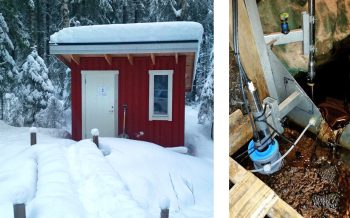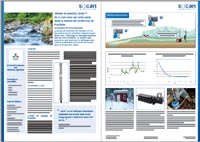Presently there is an increasing interest in the role of flux and transformations of dissolved organic carbon (DOC) in inland waters. These fluxes are crucial components in the landscape carbon budgets and the DOC quality is tightly linked with a large number of elements such as nitrogen (N), phosphorus (P), metal cations, trace elements, and environmental pollutants. The research group working within the Krycklan Catchment Study in northern Sweden is among the leaders in this currently very active research field.
spectro::lyser™ with ruck::sack as the ideal solution for Krycklan research project in Sweden

Background
The s::can Solution
Moving over to s::can spectro::lyser in the Krycklan research program not only allows to make very accurate and precise carbon budgets, it also provides researchers with high resolution assessments of the variability in the DOC quality. Presently most other field research infrastructures worldwide are insufficient in scope to properly assess the role of all components of inland waters in the face of climate change.
The Krycklan catchment study
The 30 year research program in the Krycklan catchment study includes 18 monitored streams ranging in size from 0.1 to 68 km2 and a 150 meter flux tower that allow accounting for multiple spatial and temporal scales of all carbon sources and sinks that are essential to consider. By acquiring another set of s::scan instruments they will further strengthen the world-leading Krycklan research infrastructure to allow for a more in-depth focus on lake, stream and river ecosystems and their role(s) in the landscape.
Furthermore, through this investment to fundamental research, it is also possible to provide a harmonized and long-term measurement program which yields consistent and comparable data that capture ongoing changes across spatial and temporal scales.
This experimental facility is openly accessible for any interested user and allows studies on topics ranging from fundamental principles in aquatic ecosystem ecology, practical management tools to minimize water quality perturbation, to the long-term responses in streams and lakes in the face of environmental change.
Descargar el artículo de referencia(Se abre en una nueva pestaña o ventana)
